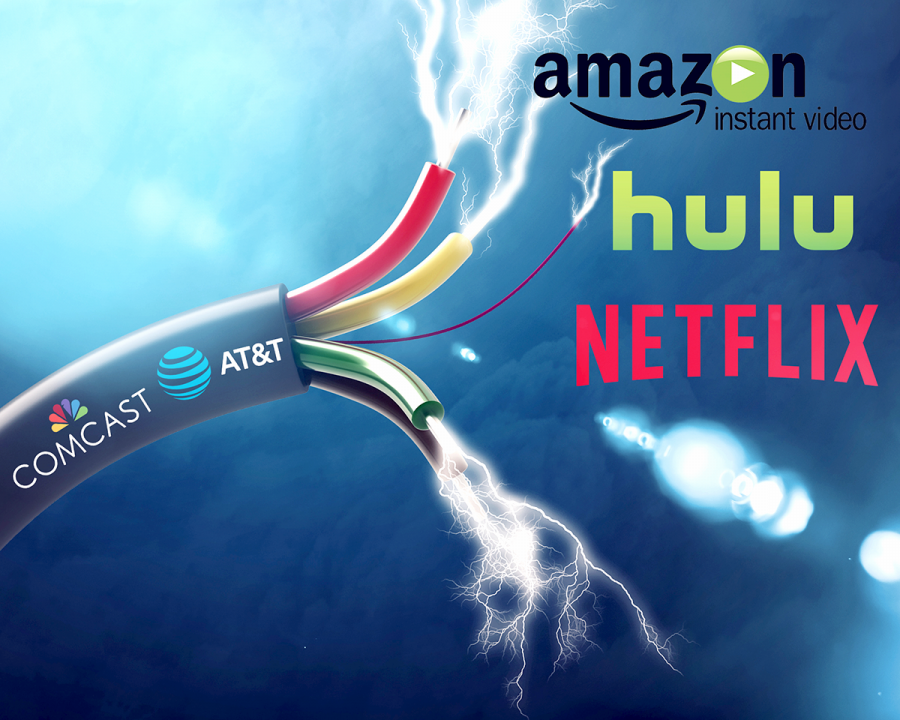Streaming services eliminates video stores
November 21, 2019
There was once a time where people actually had to get up and go to a video store like Blockbuster to pick up a VHS or DVD in order to watch a movie. Today, the inconvenient trip to the video store or the fun stroll through the video and candy aisle, depending on who is asked, is no more thanks to online streaming services such as Netflix, Hulu, and now Disney Plus.
Disney Plus, Disney’s new streaming service launched on Nov. 12. It contains much of the content created by The Walt Disney Company and also includes content from companies that Disney owns such as Twentieth Century Fox, Marvel Studios, Pixar, Lucasfilm, National Geographic and more. The streaming service costs $6.99 a month or $69.99 per year.
“Blockbuster used to be a fun place not only to work but for the families that came through,” said Dany Fagundes, a former Blockbuster employee. “Once things like Red box then streaming came along the store got empty.”
Originally Netflix was an online movie rental website where DVDs were delivered in the mail and consumers would pay per rental. Rentals cost around $4 plus a $2 postage charge. Netflix then switched to a subscriber-based model where users could keep the DVDs for as long as they wanted but were only able to rent a new movie after returning the previous one. It eventually developed into the streaming model used today, according to Interesting Engineering, a technology-based news site.
Finally, as streaming became the primary delivery method for video, Blockbuster filed for bankruptcy in 2010. Rental giants such as Blockbuster were not the only ones affected. Since then, local rental shops such as Hayward Video have closed. One of the last Bay Area video stores, Silver Screen Video in Petaluma closed this past August.
“There are so many different options out there right now,” said Rick LaFranchi, former owner of Silver Screen video in an interview with KTVU. “I’m actually surprised we were able to last here as long as we have.”
Not only has online streaming affected video rental stores, but so has cable television.
Currently, 69 percent of American consumers pay for some type of internet video streaming service, while only 65 percent of consumers pay for cable or satellite subscriptions. This is a significant increase. In 2009, only 10 percent were subscribed to online streaming services, according to a digital media trends survey by Deloitte, a business-advice consulting firm. Viewers have been cutting the cord in favor of online streaming. Americans are piecing together their media and entertainment options to suit their needs instead of subscribing to cable television services because streaming services are a more affordable option.
The volume of traffic on Netflix consumes 15 percent of the internet bandwidth globally and could take up to 40 percent in the Americas during peak hours, according to a 2018 Global Internet Phenomena Report by Sandvine, a networking equipment company based in Fremont.
Netflix would represent an even larger portion of internet-data consumption, but the compression algorithms used are highly efficient. This means that the usage of bandwidth could be higher but are not because of the algorithms. Their video encoding is more efficient than any other major streaming provider, according to Sandvine.
To expand entertainment and offer unique options not found on cable television, platforms such as Netflix, Hulu, and Amazon Prime Video all offer original content. Netflix has had huge success with original shows such as “Orange Is the New Black”, “13 Reasons Why”, and “Stranger Things.”
Disney Plus currently offers originals such as “The Mandalorian” a live-action Star Wars show and “High School Musical: The Musical: The Series” series based on the “High School Musical” films.
While the move to online video streaming felt like an overnight phenomenon, it has only been about 10 years since Netflix kicked off its online streaming model causing a chain reaction that lead to original content and various services like Hulu, Amazon Prime Video, and most recently Disney Plus.
















